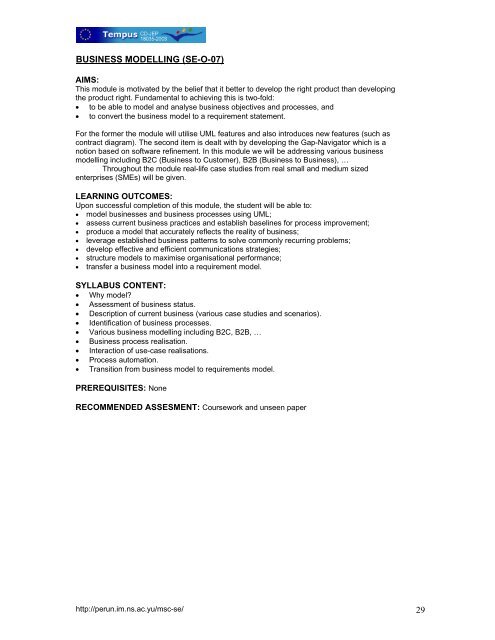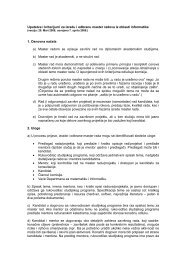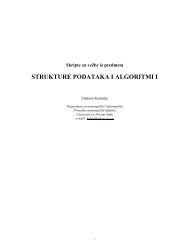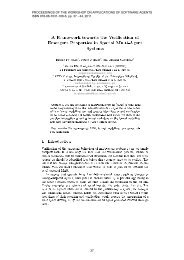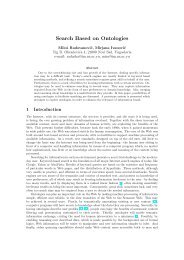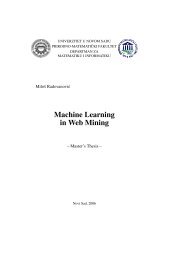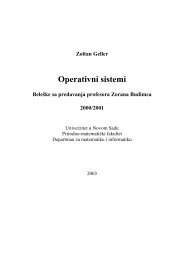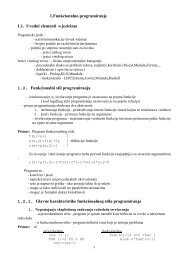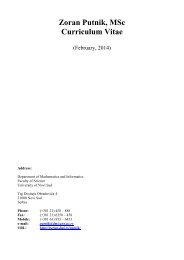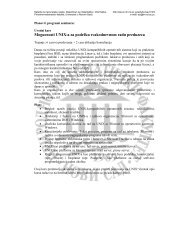Full document describing all aspects of the curriculum, release 2 (pdf)
Full document describing all aspects of the curriculum, release 2 (pdf)
Full document describing all aspects of the curriculum, release 2 (pdf)
You also want an ePaper? Increase the reach of your titles
YUMPU automatically turns print PDFs into web optimized ePapers that Google loves.
BUSINESS MODELLING (SE-O-07)AIMS:This module is motivated by <strong>the</strong> belief that it better to develop <strong>the</strong> right product than developing<strong>the</strong> product right. Fundamental to achieving this is two-fold:• to be able to model and analyse business objectives and processes, and• to convert <strong>the</strong> business model to a requirement statement.For <strong>the</strong> former <strong>the</strong> module will utilise UML features and also introduces new features (such ascontract diagram). The second item is dealt with by developing <strong>the</strong> Gap-Navigator which is anotion based on s<strong>of</strong>tware refinement. In this module we will be addressing various businessmodelling including B2C (Business to Customer), B2B (Business to Business), …Throughout <strong>the</strong> module real-life case studies from real sm<strong>all</strong> and medium sizedenterprises (SMEs) will be given.LEARNING OUTCOMES:Upon successful completion <strong>of</strong> this module, <strong>the</strong> student will be able to:• model businesses and business processes using UML;• assess current business practices and establish baselines for process improvement;• produce a model that accurately reflects <strong>the</strong> reality <strong>of</strong> business;• leverage established business patterns to solve commonly recurring problems;• develop effective and efficient communications strategies;• structure models to maximise organisational performance;• transfer a business model into a requirement model.SYLLABUS CONTENT:• Why model?• Assessment <strong>of</strong> business status.• Description <strong>of</strong> current business (various case studies and scenarios).• Identification <strong>of</strong> business processes.• Various business modelling including B2C, B2B, …• Business process realisation.• Interaction <strong>of</strong> use-case realisations.• Process automation.• Transition from business model to requirements model.PREREQUISITES: NoneRECOMMENDED ASSESMENT: Coursework and unseen paperhttp://perun.im.ns.ac.yu/msc-se/ 29


